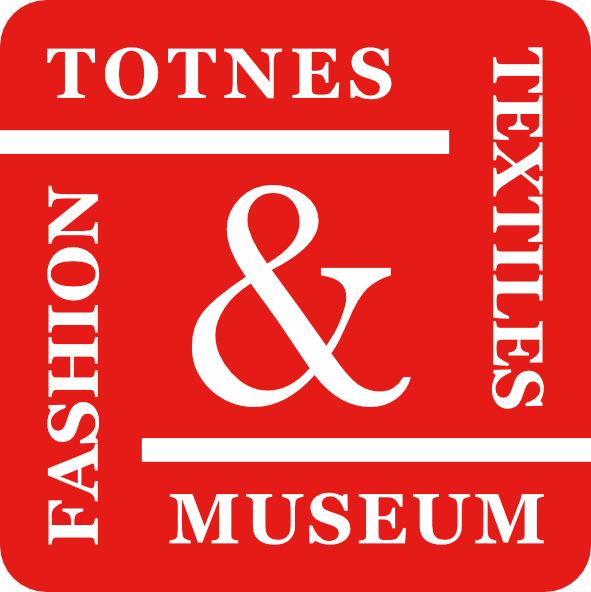The Survival of Glamour
1935–55
When the 2020 coronavirus pandemic struck, Totnes Fashion & Textiles Museum was busy preparing the 2020 exhibition, to be called The Survival of Glamour. Following the 2019 exhibition’s focus on the twenties, the 2020 exhibition looked at the two decades from 1935 to 1955.
1930s ‘Hollywood’-style dress
There were two main influences on women’s clothing in the second half of the 1930s — the romance and glamour of Hollywood films for evening and formal wear, and the apprehension concerning events in Europe on day clothes. The latter became somewhat inspired by military uniform, with square shoulders, shorter skirts and heavier-looking shoes.
After the the first year or so of the war, there started to be shortages of all sorts of goods. By 1941 the Board of Trade first introduced clothes rationing and then the Utility Scheme. Ration coupons as well as money were required to buy clothing; only hats and lipstick could be bought without coupons as they were considered good for morale. The Utility Scheme drastically limited the amount of material and labour allowed to be used in making clothes. Clothes rationing was lifted in 1949 but the Utility Scheme continued until 1952. The museum has several Utility garments in our collection which, although spare in the use of material, are well cut and stylish.
1942 Utility dress
Many women, as well as men, were in uniform during the war. Women in uniform did not receive clothing coupons and frequently wore their uniform for social events.
After the war was over, most goods continued to be in short supply as industry struggled to convert to civilian production and Britain began to pay off its huge war debt. Dior created his ‘Corolle’ collection in 1947 which came to be called the ‘New Look’, using much more material in full, longish skirts with pinched-in waists and rounded shoulders. However, the uptake of this style was slow due to continued rationing and shortages and moves by the authorities to denounce it as ‘unpatriotic’. Film continued to influence dress after the end of the war: films like ‘The Wild One’, starring Marlon Brando, set the fashion in menswear for leather jackets and denim trousers.
By 1955 Britons were putting shortages behind them and moving into a period of greater prosperity. Women were able to put yards of material into the skirts of their brightly coloured floral prints.


